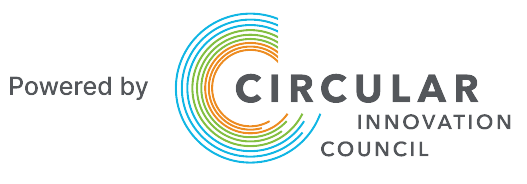Facility & Building Management
Building Management + Circular Economy
Circular Supplies
Supply fully renewable, recyclable, or biodegradable resources
Product Life Extension
extending the lifecycle of a product by repairing, upgrading, or reselling
Product As Service
Products are used by customers through leaser or pay-for-use arrangements
Resource Recovery
Eliminate material leakage and maximize economic value of product return flows
Facility and building management represents approximately two percent of Canadian municipal spend base, is a sizeable federal operating expenditure, and contributes more than forty-five megatonnes of CO2 to the atmosphere.
Within facility and building management, carpets and lighting, for example, are universal features and building management assets that typically end up as waste in landfills. They are material-intensive; mostly manufactured using virgin and non-renewable resources; often changed out while still functional; and difficult to recycle. However, by embedding circular economy thinking into the procurement process, closed-loop systems can be created to ensure the resources used are recovered, reused, and recycled back into the same or new production processes that extend the inherent value and prolongs the lifespan of resources.
During renovations, entire carpets are often replaced even though they are still functional. Moreover, it is often just sections of carpet that have reached end-of-life in high-traffic areas, which means the perfectly useable carpet is unnecessarily lost to disposal. It is estimated that between 95 – 99 percent of carpets are lost to disposal in Canada. While efforts are being made by producers to recover and recycle this carpet, most of it is being exported overseas, which is costly and inefficient. Additionally, various impacts occur throughout the carpets’ lifecycle, including chemical emissions, during manufacturing and disposal at end-of-life.
Applying circular procurement principles to facility and building management can advance multiple circular business models – product as service, resource recovery, and circular supplies – to reduce greenhouse gas emissions, extend resource value, create new resource inputs, and eliminate waste.
Buyers and suppliers of carpets are recognizing the environmental and economic losses of landfilling carpets and deploying several of the circular business models to reduce the losses and impacts.
EXAMPLE
How Facility & Building Management Can Advance The Circular Economy
Flooring companies are seeing the economic and environmental benefits of recovering and innovating to integrate post-consumer carpet material into the production of new flooring. This activity supports closed-loop systems and promotes resource recovery, circular supplies, and product as service business models. Organizations procuring carpets can use buying power to create demand required for more circular options. For example, procurement specifications can require product take-back to better manage waste and recover materials that manufacturers can use in new products.
Energy management and lighting is another instance where procurement can be used to drive innovative circular business models. An alternative approach to purchasing lighting is a product as service where lumens are procured instead of the bulb itself. The manufacturer or service provider maintains ownership of the lighting fixture and lamps and manages the product throughout its lifecycle. Customers pay only for the light/lumens used rather than hardware, maintenance, and disposal. Full ownership of the equipment is retained by the manufacturer or service provider, which reduces liability and end-of-life management costs for the buyer. This approach allows for contract extensions and easy upgrades while concurrently ensuring bulbs are recovered for reuse or recycling into new production cycles. It also creates a stronger relationship between seller and buyer; and incents lighting suppliers to invest in ways to integrate end-of-life materials back into production cycles.
Circular Supplies
Product Life Extension
Product as service
Resource Recovery
LEAD PARTNER:
FACILITY MANAGEMENT

JOIN US

Awareness of the negative effects of unsustainable consumption and production, and the link to the current linear economy of take-make-waste, is an important priority in today’s society. Governments, businesses, and communities worldwide realize the need to fundamentally and systematically shift patterns of production and consumption. The circular economy offers an alternative and reinvented economic model that is holistic in nature and drives economic prosperity while protecting the environment to benefit society.
We are on the cusp of the circular economy in Canada and collaboration is crucial to advance it.
For information on how to further align efforts to support greater circularity, a customized partnership proposal is available on request. Contact for more information.
